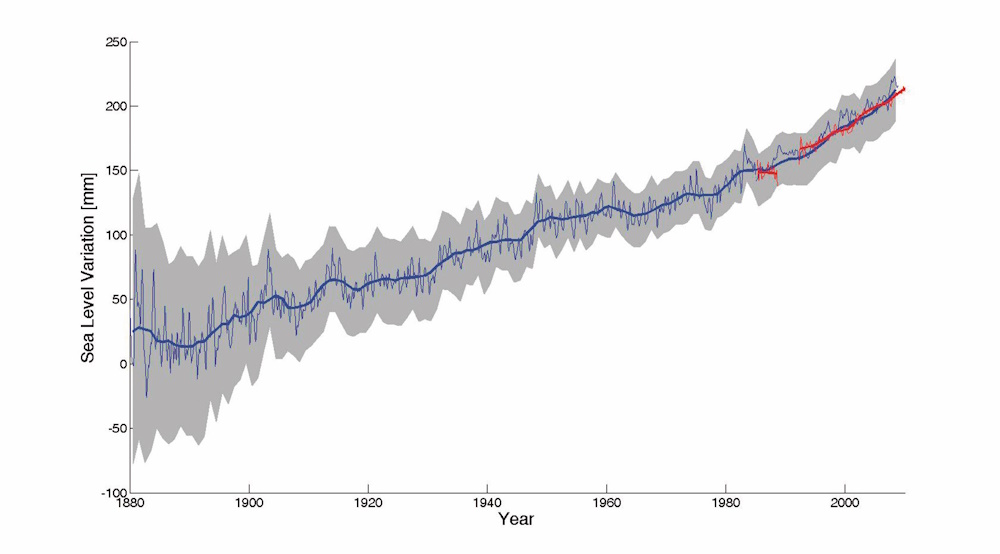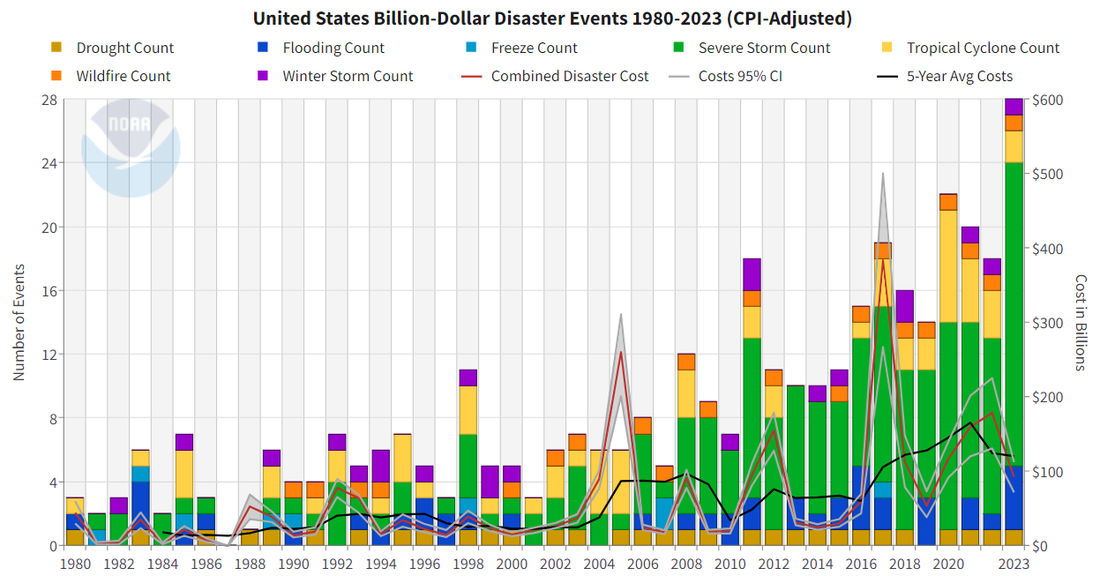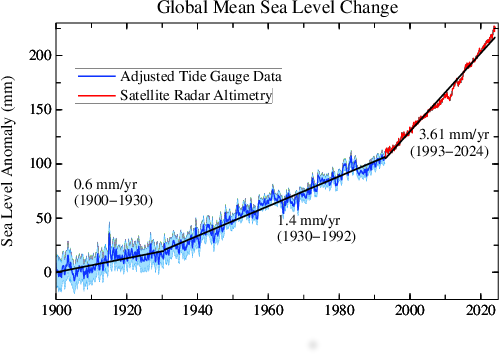svetz
Works in theory! Practice? That's something else
Sea level rise
I was reading an article on Louisiana being threatened by rising seawater that sounded very much like local problems and came across the left graph from the Royal Society. What grabbed my attention is that it's practically a straight line, but it shouldn't be as temperature didn't change much until after 1980.

| 
|
While the slope does uptick around 1990 in the Royal Society chart, I was expecting to see something more dramatic like the cost of weather disasters where it follows the global temperature fairly closely. Something like this:

It looks like sea water rising was well on the way long before GHGs were noticeable enough to make a difference. I don't think that's a surprise to anyone, it just means we were in a warming cycle before the industrial revolution.
Melting sea ice obviously doesn't contribute to sea level rise, the water has to come from ice/snow on land. At the transition out of the last ice-age that dominated the last 20,000 years. It began with ice-caps over parts of Europe and North America and ended not so long ago with much of that ice gone but with sea levels having risen by more than 120 meters. Scientists have estimated there's enough land-ice today that if all melted the oceans might rise by 60 meters.
| Before radar altimetry from satellites, tide gauges were used. That data has been adjust by Columbia University to give a different picture that matches more of what I expected. Why did the tide gauge data need adjusting? This NACR article says it was for a wide variety of reasons (e.g., lack of early standards, local and regional changes in winds). I can see that, early tide gauges are little more then a pencil on a stick attached to a float. Deniers have, of course, used the adjustments as proof that it's all a hoax, and there's a rebuttal about that too. | 
|
| So, what does the IPCC say about the increase of sea level rise? Their graph is somewhat confusing because they show the level of uncertainty for various ranges depending on what humans might do. The 4 RCPs repesent various scenarios of us cleaning up emissions: 
| 
|
| While we've been steaming along towards RCP 8. nearly every country in the world wants to get to net zero, most by 2050. But, only a handful of countries (looking at you Denmark) will probably make it. The U.S. (shown right) is currently on an RCP 4.5 to 6.0 trajectory. Bottom Line Even in the worst case scenario, we're only talking about a one meter rise by 2100. It's not the doom and gloom some environmentalists would have you believe. |
So, coastal cities like Miami should plan for sea level rise, three feet of water is a lot of water afterall, but it's a slow few millimeters a year problem so there's plenty of time to work out solutions. The Netherlands dike network extends for over 22,000km, so it can be done.
Myths around Sea-Level
- Florida will soon be under water
- Sea level fell in 2010
- Sea level is not rising
- Sea level rise is decelerating






